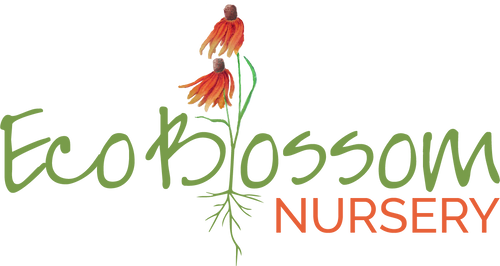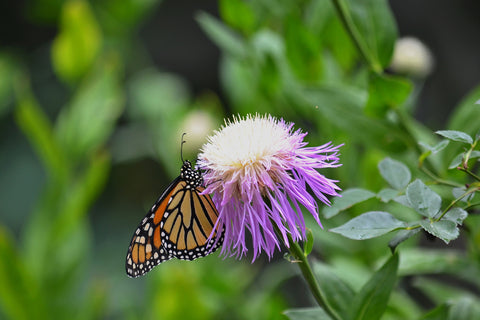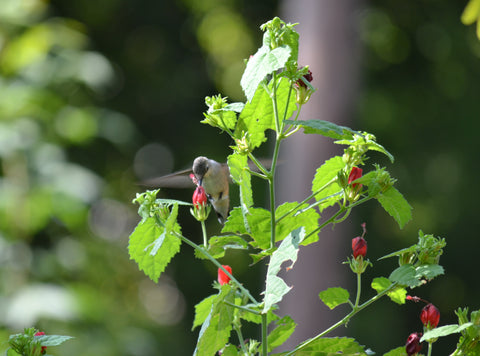Native Plants: Giving Wildlife a Place to Call Home
Thanks to their beauty, vitality, and versatility, native plants are finally enjoying their day in the sun. Native plants occur naturally in a specific geographic region and have evolved to thrive in the conditions of that environment, including the climate and soil. They’re typically more tolerant of drought and stress, they need less water, they’re less prone to disease, and they don’t take as much work. Whether you choose native trees, shrubs, grasses, flowers, or groundcover, native plant species are an important part of any North Texas garden.
Native plants offer another significant benefit: They provide a habitat for wildlife, from mammals to pollinating insects. To put it simply, native plants give wildlife a place to call home.
Rolling out the Welcome Mat for Wildlife
What kind of wildlife are we talking about, exactly? All kinds, including birds, butterflies, bees, amphibians, reptiles, and a range of welcome mammals. Here in North Texas, you may see chickadees, cardinals, mockingbirds, wrens, finches, and dozens of others. You may attract a medley of butterflies, including monarchs, swallowtails, sulphurs, and queens, as well as other essential pollinators such as hummingbirds, native bees, moths, and bats.
And yes, you may attract squirrels, possums, rabbits, and other small mammals, all of which have a place in the garden ecosystem. In fact, the presence of small mammals means that your garden is thriving, and that your insect populations are likely under control. Possums are a great example of the unexpected benefits of garden guests. Our only marsupial, they are harmless, do not carry rabies, and eat ticks by the thousands. Small mammals may even attract larger predators such as hawks, owls, and foxes, indicating that your garden is truly a source of balance in nature.
Native plants are a fundamental component of wildlife habitats. Without extra effort in the garden on our part, these plants naturally provide food and water, nectar, shelter, nesting materials, areas to breed and to raise young, and places to perch, rest, and hide. They yield the ideal fruits, seeds, berries, and nuts to nourish wildlife, as well as attracting other appreciated food sources such as insects, fungi, and lichens. In a nutshell, native plants help wildlife survive in an often inhospitable world.
Wildscaping for Wildlife
Once you’ve gone native in your garden, you’re well on your way to creating a “wildscape.” Wildscaping is the intentional development of natural habitat that attracts wildlife, especially birds and butterflies. Whether it’s in one corner of your backyard or across your entire property, wildscapes provide all the major elements of habitat: food, water, shelter, and space.
Wildscapes have a number of elements in common. They provide natural food sources as well as supplemental food such as a variety of birdseed. And they provide fresh water for drinking and bathing, whether from a small dish, a fountain, a birdbath, or a small pond. Some have nesting boxes for growing families. Some have rock formations for lizards to climb on. Some are fertilized with compost and irrigated with rainwater.
With wildscaping, you’re taking an active part in creating a safe place for wildlife to live, not just to visit. And it can be far more fun and interesting than maintaining a pristine garden. When fall leaves fall, leave some for behind for natural fertilizer. Leave dead trees in place to create small shelters or “snags” that provide cover for critters. Better yet, build your own snags out of logs and branches. Create different layers in your garden with plants of different heights, from groundcover to shrubs to trees. Wildlife will love the playground you’ve constructed.
Most importantly, minimize use of non-native plants, eliminate invasive species, and don’t use insecticides. Making your wildscape an insecticide-free zone only makes sense, as no wildlife habitat is complete without insects. Insecticides are non-selective and will kill beneficial insects along with the unwanted ones. Creating a healthy, balanced wildscape will help control pests naturally while attracting those that wildlife enjoy.
Choosing the Right Native Plants
Even in the extreme and unpredictable climate of North Texas, gardeners have an abundance of native plants to choose from, including hardy deciduous shrubs, ornamental trees, and blooming perennials in a stunning array of colors. To attract the widest range of wildlife, including pollinators, plant an equally wide range of native plants.
For flowering plants in particular, you’ll want to choose plants that yield a variety of colors and fragrances. Keep in mind that plants that bloom at different times of the year will help ensure that your garden is welcoming to wildlife year-round.
Looking for ideas for native Texas plants that wildlife love? Here are some examples of native plants that are easy to grow and wildlife-friendly:
- Agarita – an evergreen shrub that produces small yellow flowers, followed by delicious red berries
- American beautyberry – a perfect understory or woodland garden shrub that yields sparkling magenta berries
- Texas persimmon – a small ornamental tree with edible fruit and attractive exfoliating bark
- Texas sage – a semi-evergreen shrub with silvery grey or green foliage and purple flowers
- Yaupon holly – an evergreen shrub or small tree that produces red berries as well as dense branching and foliage for wildlife nesting and resting
- Turk’s cap – a shrubby perennial with a long blooming season and bright red blooms that are relished by bees, butterflies, and hummingbirds
- Fall aster – a fall-blooming perennial that is an important late-season nectar source, attracting native bees and beneficial insects
- Texas lantana – a shrubby perennial with cheerful yellow and orange blooms that attract pollinators
- Shrubby boneset – a low-maintenance shrub providing late season nectar for pollinators
- Gregg’s mistflower – a butterfly magnet and a must-have in any pollinator garden
Explore other plants here.
A Haven of Hospitality
Native plants have gained popularity as our understanding of the many benefits they offer in the garden grows. Whether you’re a budding gardener or a seasoned professional, consider making at least part of your garden wildlife-friendly. You may soon hear the birds, bees, and other critters thanking you in their own words!














